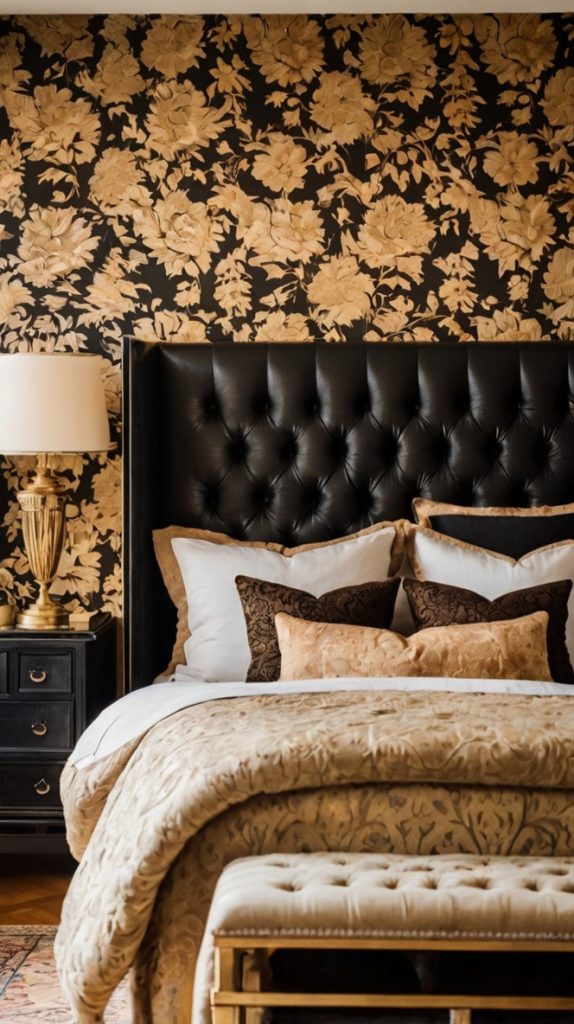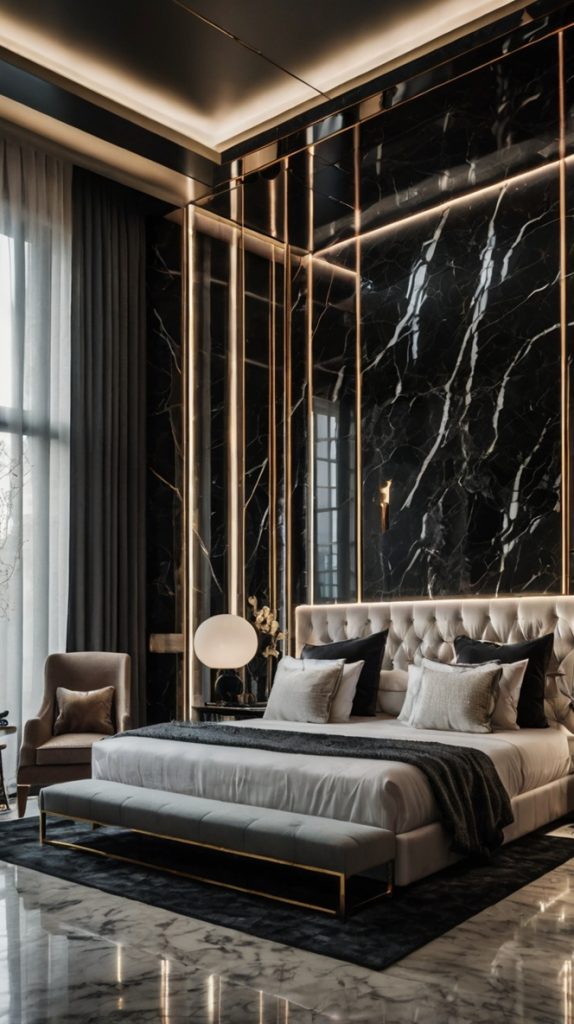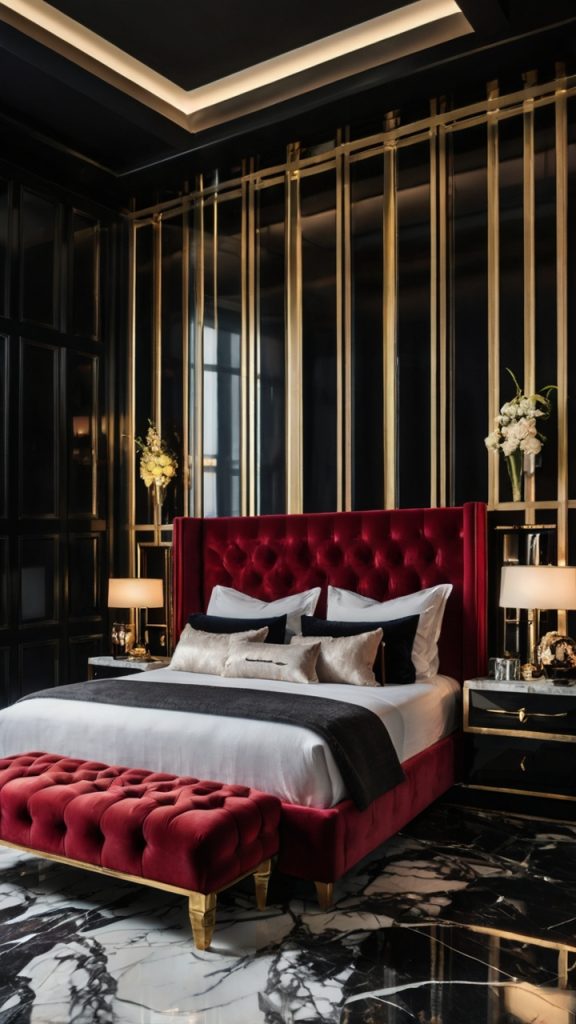15 Stunning Living and Dining Room Combo Ideas for Modern Homes
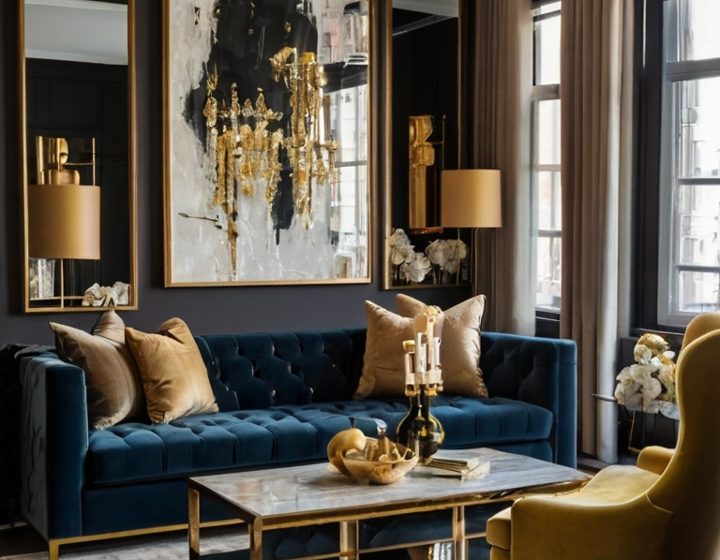
So you’re staring at that awkward space where your living room meets your dining area, wondering how to make it all work together without looking like a furniture store exploded? Yeah, I’ve been there. Trust me, combining these two spaces doesn’t have to feel like solving a Rubik’s cube blindfolded.
Here’s the thing – living and dining room combos aren’t just trendy; they’re becoming the norm. Whether you’re working with a studio apartment or just love that open-flow vibe, getting these two spaces to play nice together can actually make your home feel bigger, brighter, and way more functional. Who knew, right?
I’ve spent years experimenting with different layouts (and made plenty of mistakes along the way), so let me share what actually works. These 15 ideas will help you create a space that flows naturally and looks intentional – not like you just pushed all your furniture against the walls and called it a day.
Modern Minimalist Combo
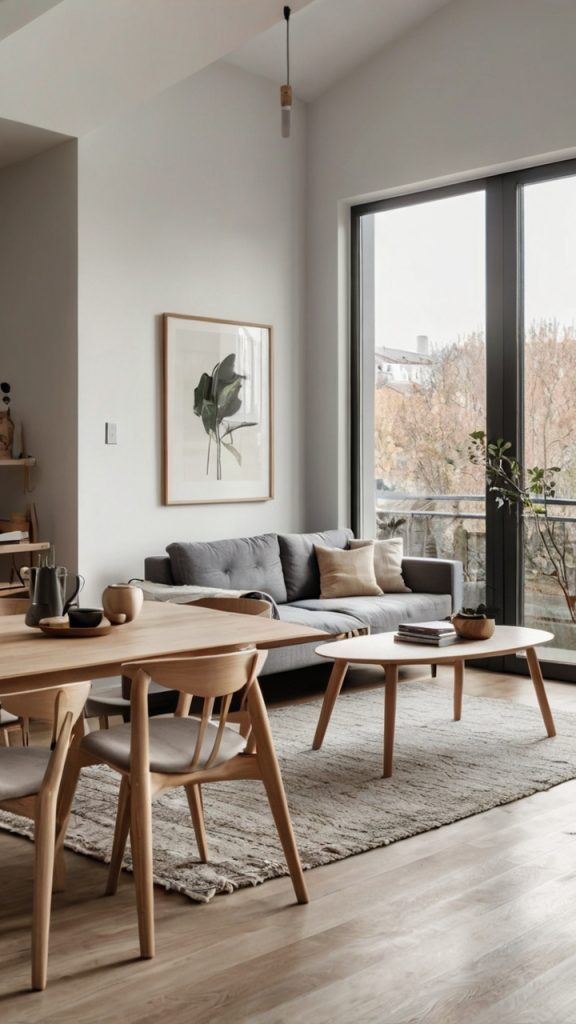
Let’s kick things off with my personal favorite – the modern minimalist approach. This style basically says “less is more” and actually means it. I remember walking into my friend’s apartment for the first time after she went full minimalist, and honestly? The space felt twice as big.
The key here revolves around clean lines and purposeful pieces. You want furniture that serves multiple functions without screaming for attention. Think sleek dining tables that double as workspaces and sofas with hidden storage compartments.
Color Palette Magic
Stick to a monochromatic color scheme – whites, grays, and blacks work beautifully here. But here’s where people mess up: they think minimalist means boring. Nope! Add texture through materials like:
- Smooth marble tabletops
- Soft wool throws
- Matte black metal accents
- Natural wood elements (sparingly)
Space-Defining Tricks
You don’t need walls to separate spaces. Use a low-profile console table behind your sofa to create a subtle boundary. Or try a minimalist area rug that defines the living room zone without adding visual clutter. The goal? Make everything look intentional and effortless.
Cozy Scandinavian Blend
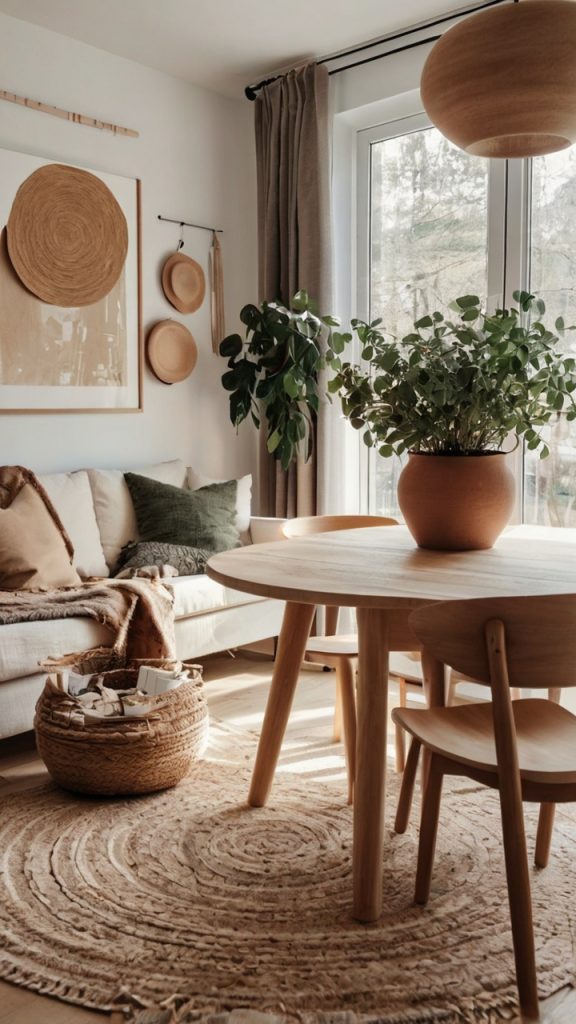
Ah, the Scandinavians – they really know how to make a space feel like a warm hug, don’t they? This style combines functionality with comfort in a way that makes you want to curl up with hot cocoa year-round.
The Scandinavian approach focuses on hygge (that Danish concept of coziness) while keeping things practical. Light woods, soft textiles, and plenty of natural light form the foundation here.
Essential Elements
Start with light-colored wood furniture – think ash, birch, or pine. Your dining table and coffee table should feel like siblings, not distant cousins. Layer in these must-haves:
- Chunky knit blankets draped over chair backs
- Sheepskin rugs (real or faux – your choice)
- Simple pendant lights over the dining area
- Plants, plants, and more plants
Creating Flow
The beauty of Scandinavian design lies in how it connects spaces through consistency. Use the same wood tone throughout both areas. Pick dining chairs that echo the curves of your sofa. Everything should feel cohesive without being matchy-matchy.
Open-Concept Elegance
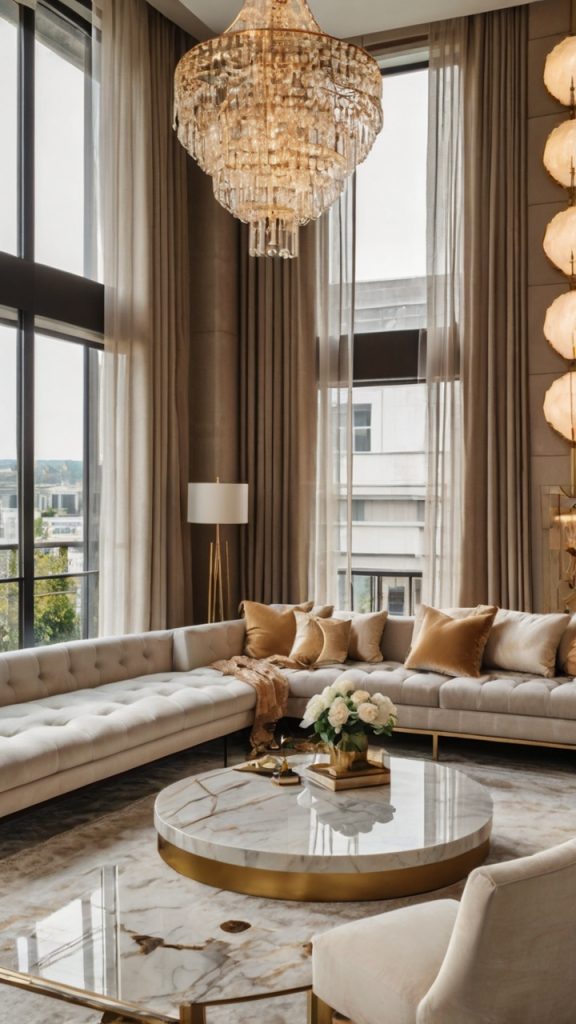
Want to feel like you’re living in a magazine spread? Open-concept elegance brings that sophisticated, pulled-together look without feeling stuffy. This style works especially well in homes with high ceilings or large windows.
The trick here involves treating your entire space as one cohesive room rather than two separate areas forced to share square footage. Everything flows together seamlessly.
Furniture Placement Strategy
Position your sofa to face away from the dining area, creating a natural division. Use a statement chandelier over your dining table to anchor that zone. Consider these layout tips:
- Float furniture away from walls
- Create conversation areas with chair placement
- Use a large area rug to ground the living space
- Keep sightlines clear between zones
Color Coordination
Pick a neutral base palette and add pops of color through accessories. Maybe navy throw pillows that match your dining chair cushions? Or metallic accents that appear in both spaces? The repetition creates visual harmony.
Also Read: 15 Creative Side Table Decor Living Room Ideas You’ll Love
Rustic Farmhouse Fusion
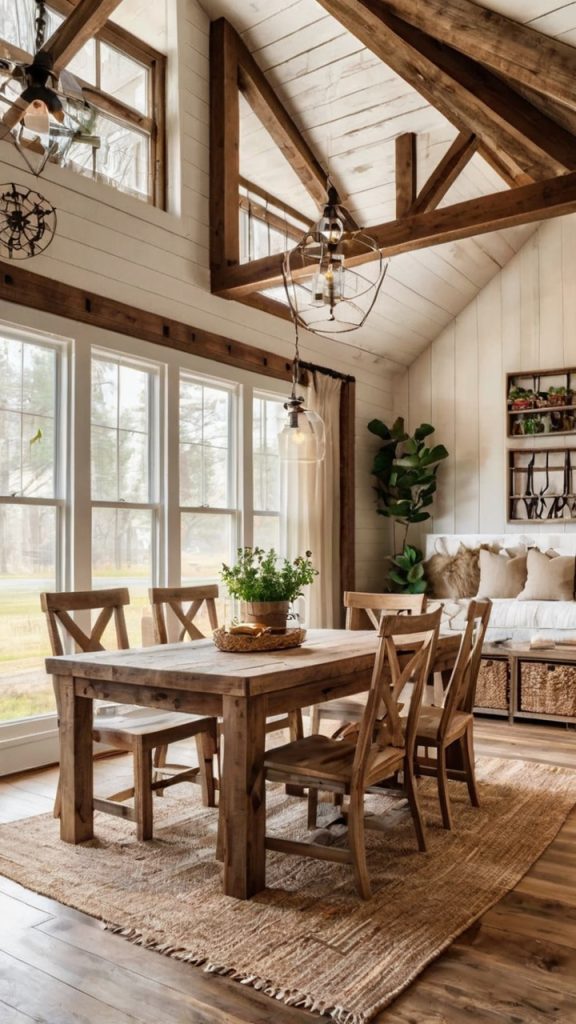
Okay, who doesn’t love that cozy farmhouse vibe? It makes every meal feel like Sunday dinner at grandma’s house. This style combines rustic charm with modern functionality – and yes, you can pull it off without living on an actual farm 🙂
The farmhouse fusion approach celebrates natural materials and lived-in comfort. Think reclaimed wood, wrought iron details, and plenty of character.
Key Features
Start with a chunky wooden dining table – the kind that looks like it has stories to tell. Pair it with mismatched chairs for that collected-over-time feel. In your living area, anchor things with:
- A slipcovered sofa in natural linen
- Vintage-style coffee table (distressed wood FTW)
- Open shelving displaying mason jars and pottery
- Buffalo check or gingham accent pillows
Tying It Together
Use consistent wood tones throughout both spaces. Add warmth with Edison bulb fixtures and wrought iron hardware. The goal? Make it feel authentic, not like you raided every farmhouse decor aisle at Target.
Industrial Loft Layout
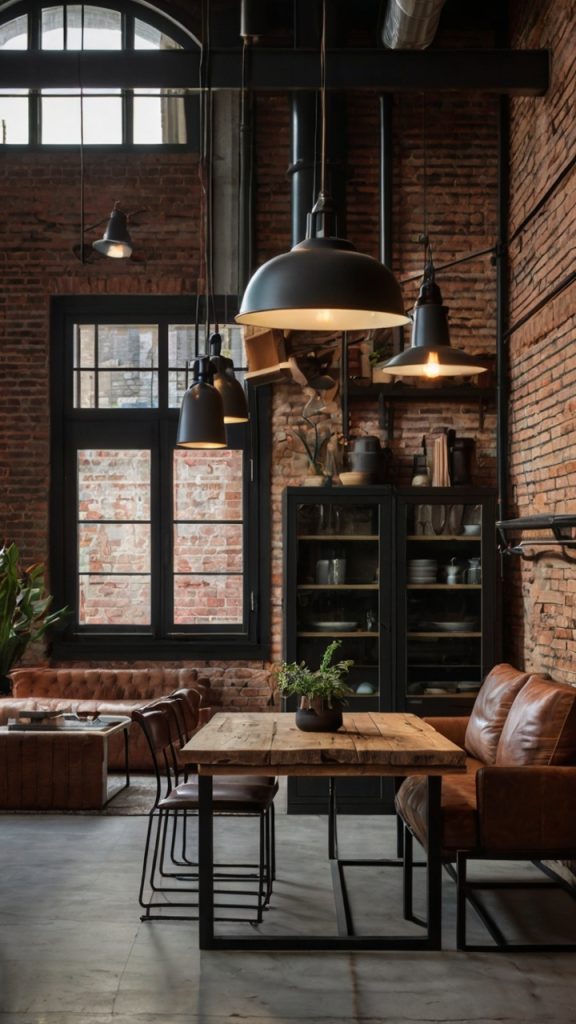
Channel your inner city dweller with an industrial loft layout that screams urban cool. This style works incredibly well in actual lofts (obviously) but also transforms regular spaces into something edgier.
The industrial look celebrates raw materials and exposed elements. We’re talking exposed brick, metal fixtures, and concrete surfaces that most people would try to hide.
Material Mix
Balance is everything here. Too much metal feels cold; too much wood loses the industrial edge. Try this formula:
- Metal dining chairs with a reclaimed wood table
- Leather sofa paired with a metal coffee table
- Exposed pipe shelving units as room dividers
- Concrete or dark wood floors throughout
Lighting Solutions
Industrial lighting makes or breaks this look. Install pendant lights with exposed bulbs over your dining table. Add a tripod floor lamp in the living area. The lighting should feel functional first, decorative second.
Boho Chic Harmony
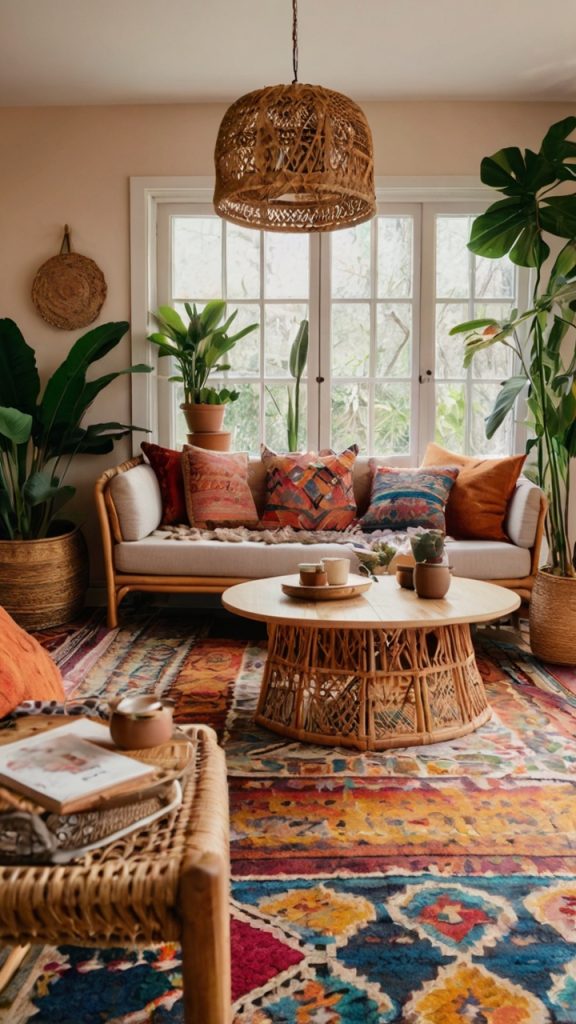
Ready to embrace your free spirit? Boho chic creates a relaxed, eclectic vibe that feels collected rather than decorated. This style lets you break rules and mix patterns like nobody’s business.
The bohemian approach layers textures, patterns, and colors in a way that somehow works despite seeming chaotic on paper. It’s organized chaos at its finest.
Layering Like a Pro
Start with a neutral base – maybe a beige sofa and natural wood dining table. Then go wild with:
- Moroccan-style rugs (layer multiple!)
- Macramé wall hangings
- Colorful throw pillows in various patterns
- Hanging plants in woven planters
- Mix-and-match dining chairs
Creating Cohesion
Even boho needs some boundaries. Pick two or three main colors and weave them throughout both spaces. Maybe terracotta, mustard, and teal? Use these colors in different patterns and textures to maintain that eclectic feel while keeping things tied together.
Also Read: 15 Chic Black Couch Living Room Decor Ideas You’ll Adore
Mid-Century Modern Merge
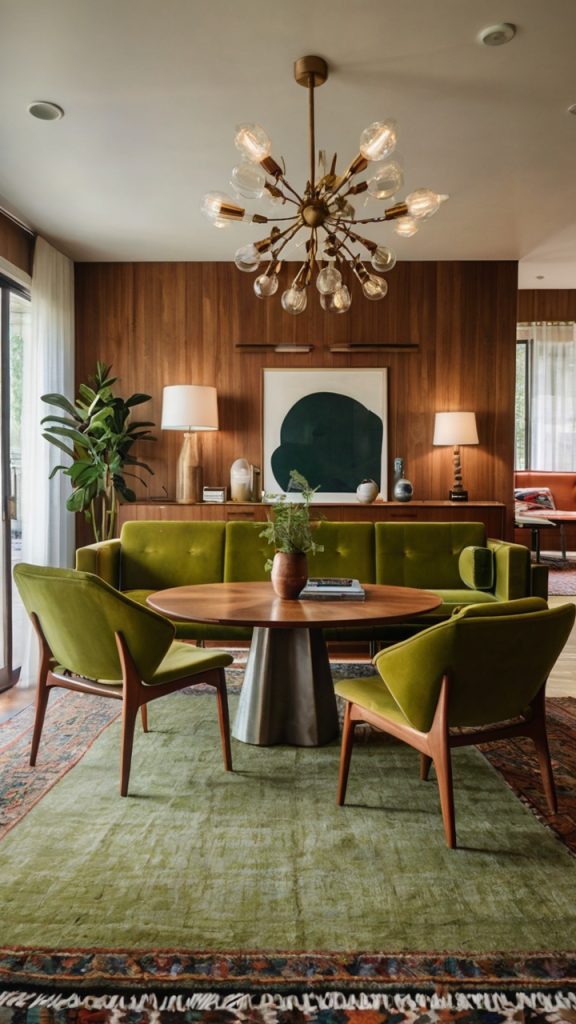
Can we talk about how mid-century modern never goes out of style? This timeless look brings sophistication without stuffiness, perfect for combo spaces that need to feel both functional and fabulous.
Mid-century design emphasizes clean lines, organic shapes, and functionality. Every piece should look good and serve a purpose – no room for purely decorative nonsense here.
Signature Pieces
Invest in a few iconic mid-century pieces that anchor your space:
- Walnut dining table with tapered legs
- Low-profile sofa in burnt orange or teal
- Starburst clock or mirror as wall art
- Tulip chairs or Eames-style seating
- Geometric area rug defining zones
Color Play
Mid-century loves bold color choices against wood tones. Pick one statement color (orange, turquoise, or mustard work great) and repeat it in small doses throughout both areas. Keep the rest relatively neutral to let these pops shine.
Small Space Smart Design
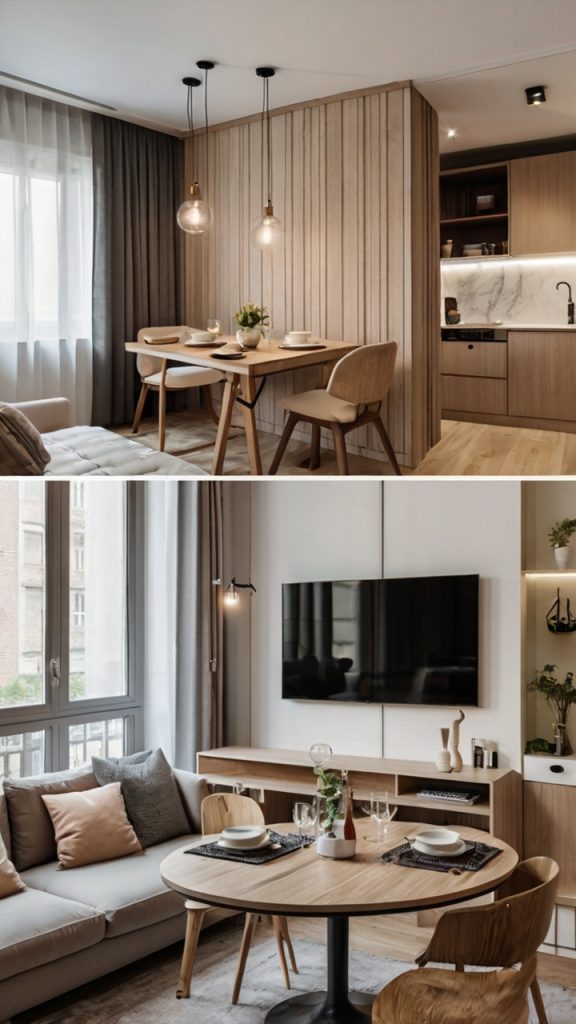
Living in a shoebox? Join the club! Small space design requires creativity, but you can absolutely make a combo room work without feeling cramped. I’ve lived in 500 square feet, and trust me – it’s all about being strategic.
The secret lies in multi-functional furniture and vertical storage. Every piece needs to earn its keep in a small space.
Space-Saving Solutions
These game-changers will transform your tiny combo:
- Expandable dining table that shrinks for daily use
- Nesting coffee tables that tuck away
- Wall-mounted TV to free up surface space
- Dining bench with built-in storage
- Floating shelves instead of bookcases
Visual Tricks
Make your space feel bigger with these optical illusions:
- Mirrors strategically placed to reflect light
- Light colors on walls and major furniture
- Glass or acrylic furniture that “disappears”
- Consistent flooring throughout (no transitions!)
Neutral Toned Serenity
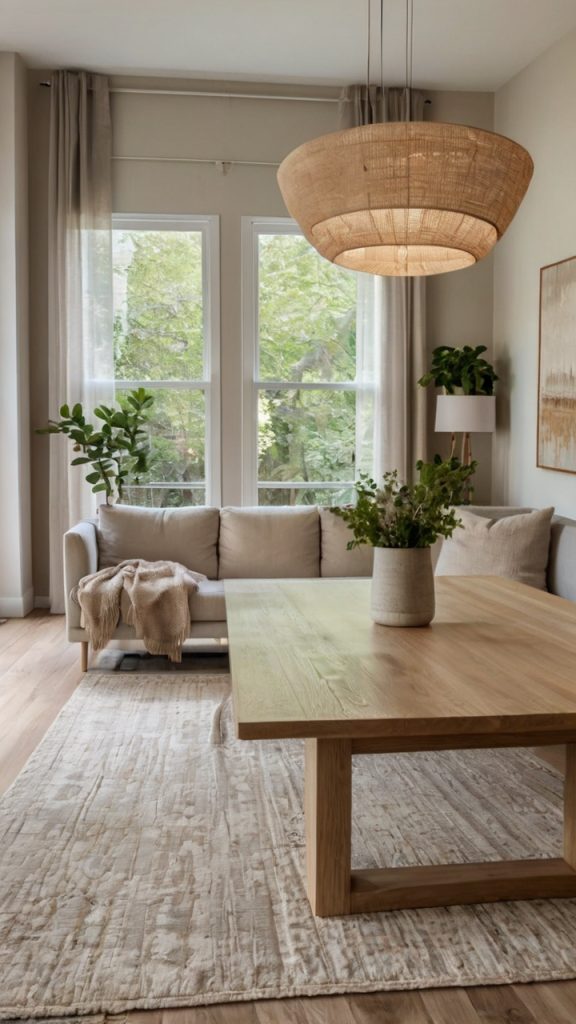
Sometimes you just want your home to feel like a calm oasis, right? Neutral tones create that spa-like serenity that makes you exhale the moment you walk in.
This approach uses varying shades of beige, gray, and white to create depth without overwhelming the senses. But neutral doesn’t mean boring – texture becomes your best friend here.
Texture Variety
Layer different textures to add interest:
- Linen sofa with velvet throw pillows
- Jute rug under the dining table
- Smooth marble accents
- Rough-hewn wood elements
- Soft cashmere throws
Defining Spaces
Use subtle color variations to distinguish areas. Maybe your living room leans toward warm grays while your dining area features cooler taupes? The difference should whisper, not shout.
Also Read: 15 Stunning Black and White Living Room Decor Ideas to
Glamorous Urban Mix
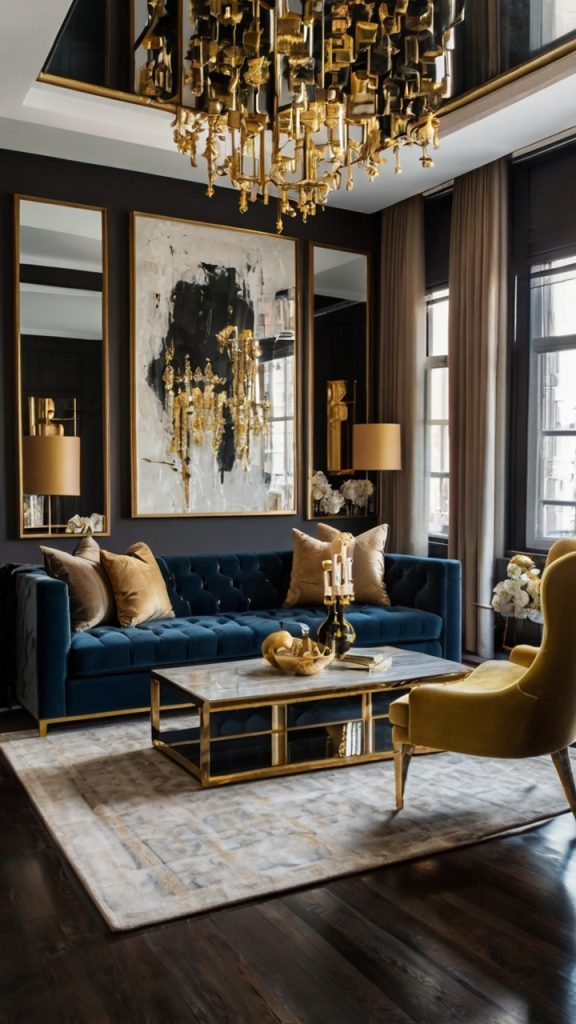
Want to feel like you’re living in a penthouse even if you’re on the second floor? The glamorous urban mix brings luxury vibes without the trust fund requirement.
This style combines metropolitan sophistication with touches of glamour. Think velvet, metallics, and statement pieces that demand attention.
Luxe Elements
Incorporate these glamorous touches:
- Velvet dining chairs or sofa (jewel tones work beautifully)
- Mirrored or glass-top coffee table
- Crystal chandelier over the dining area
- Metallic accents in gold or rose gold
- Plush area rugs with subtle sheen
Balancing Act
Too much glamour feels gaudy. Balance luxe elements with modern, clean-lined pieces. Pair that tufted velvet sofa with a simple wood dining table. Mix high and low for a collected, not decorated, feel.
Nature-Inspired Open Space
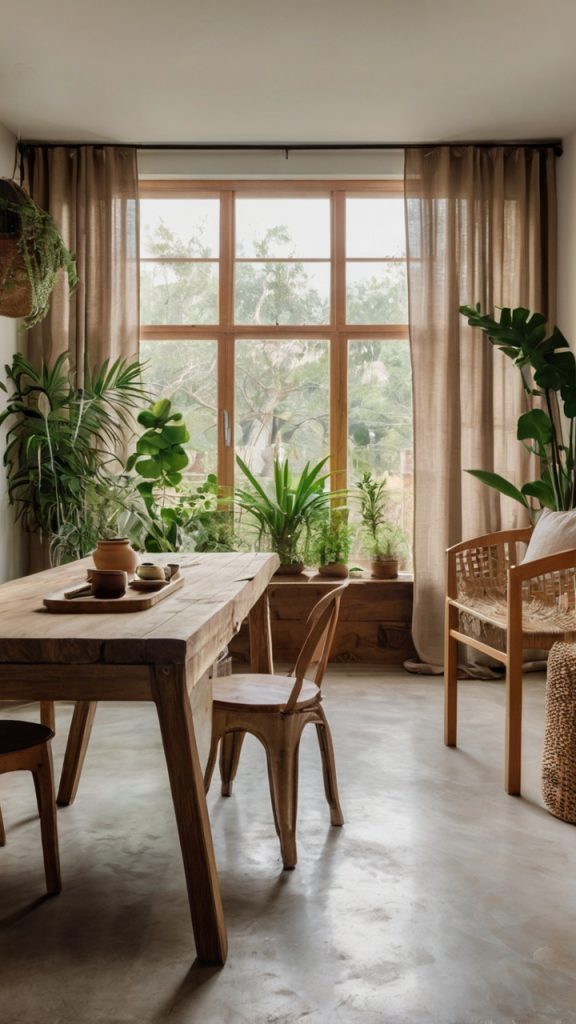
Bringing the outdoors in creates a fresh, organic atmosphere that never feels dated. This approach works especially well if you lack actual outdoor space (apartment dwellers, I see you).
Nature-inspired design focuses on natural materials, earth tones, and plenty of greenery. The space should feel alive and breathing.
Natural Elements
Build your foundation with:
- Live-edge wood dining table
- Natural fiber rugs (jute, sisal, or seagrass)
- Stone or wood accent pieces
- Plenty of plants (seriously, go wild)
- Natural light maximized through sheer curtains
Biophilic Design Principles
Create zones using plants as natural dividers. A row of tall plants can separate dining from living areas without blocking light. Use hanging planters to draw the eye up and make spaces feel larger.
Vintage Meets Modern Combo
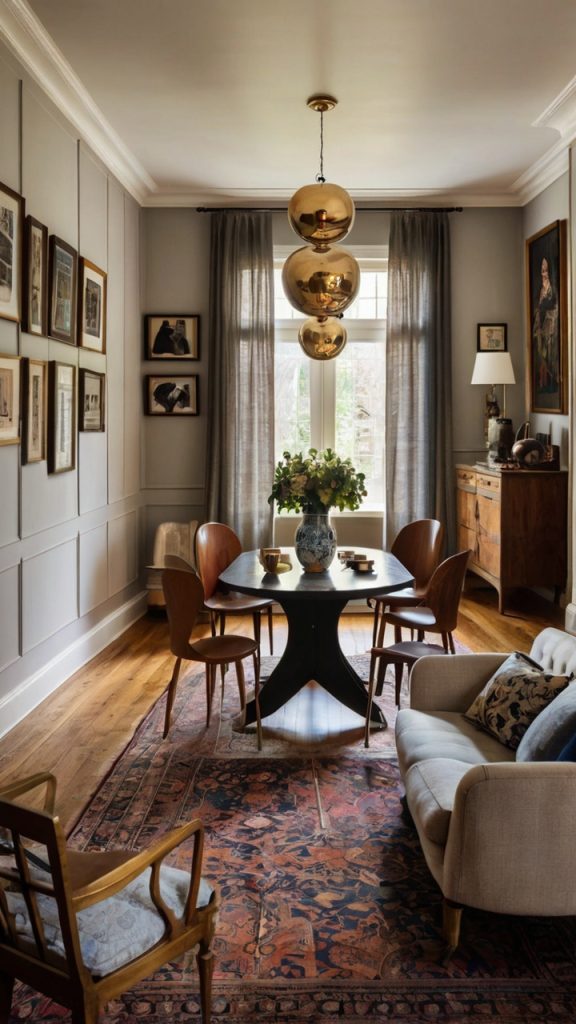
Why choose between old and new when you can have both? This eclectic mix creates personality-packed spaces that tell a story. IMO, this style shows real personality rather than just following trends.
The key involves balancing vintage character pieces with modern functionality. You want conversation starters, not a time capsule.
Mixing Eras Successfully
Follow the 80/20 rule:
- 80% modern pieces for functionality
- 20% vintage accents for character
- Vintage dining chairs with a modern table
- Antique bar cart in the living area
- Modern sofa with vintage side tables
Creating Harmony
Tie everything together through consistent color tones or materials. Maybe all your wood pieces share warm undertones? Or your metals all lean brass? These subtle connections prevent visual chaos.
Coastal Breeze Layout
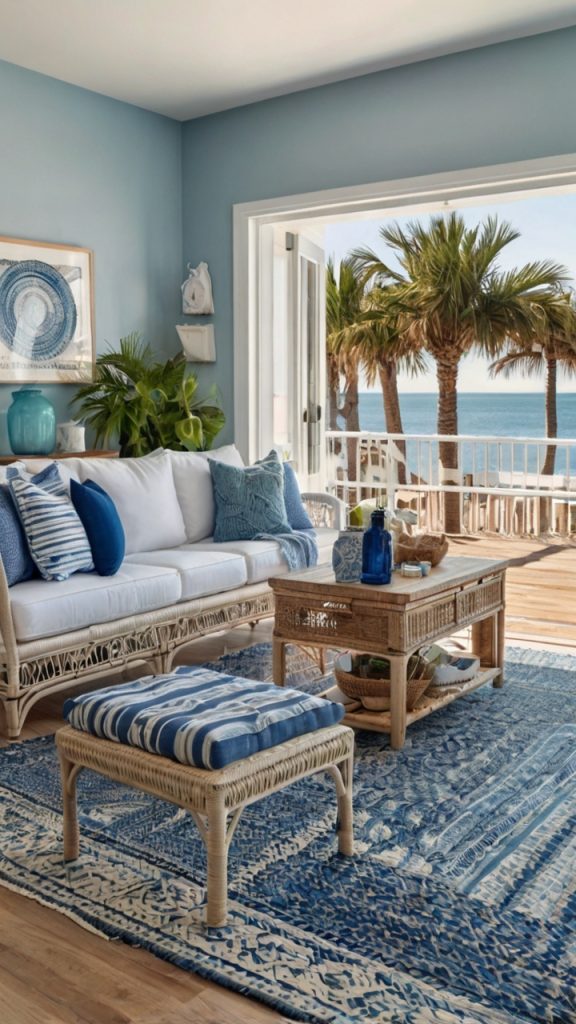
Missing the beach? The coastal breeze layout brings vacation vibes home year-round. This style feels relaxed and breezy without looking like a beach-themed restaurant.
Coastal design emphasizes light, airy spaces with ocean-inspired elements. But please, resist the urge to hang fishing nets everywhere.
Coastal Color Palette
Stick to these tried-and-true combinations:
- White and navy blue base
- Sandy beige accents
- Seafoam green or aqua pops
- Natural wood tones (driftwood-style)
- Rope and rattan textures
Breezy Flow
Create an open, airy feeling by keeping furniture low-profile and leaving plenty of negative space. Use sheer curtains to maximize natural light. The space should feel like windows are always open, even when they’re not.
Luxury Contemporary Combo
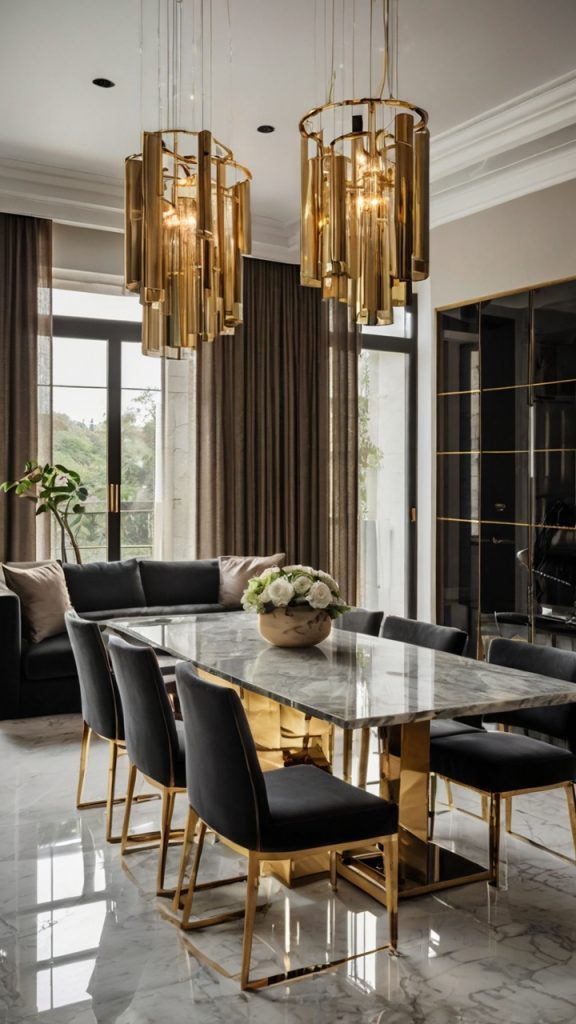
Sometimes you want your space to feel like a high-end hotel suite. Luxury contemporary design delivers that polished, sophisticated look that impresses without trying too hard.
This style emphasizes quality over quantity with carefully curated pieces that make a statement. Every element should feel intentional and premium.
Investment Pieces
Splurge strategically on:
- High-quality leather or performance fabric sofa
- Solid wood or marble dining table
- Designer lighting fixtures
- Original artwork or large-scale prints
- Premium window treatments
Sophisticated Details
Pay attention to the little things:
- Consistent hardware finishes throughout
- Hidden storage to maintain clean lines
- Professional-quality styling accessories
- Layered lighting (ambient, task, and accent)
Japandi Style Integration
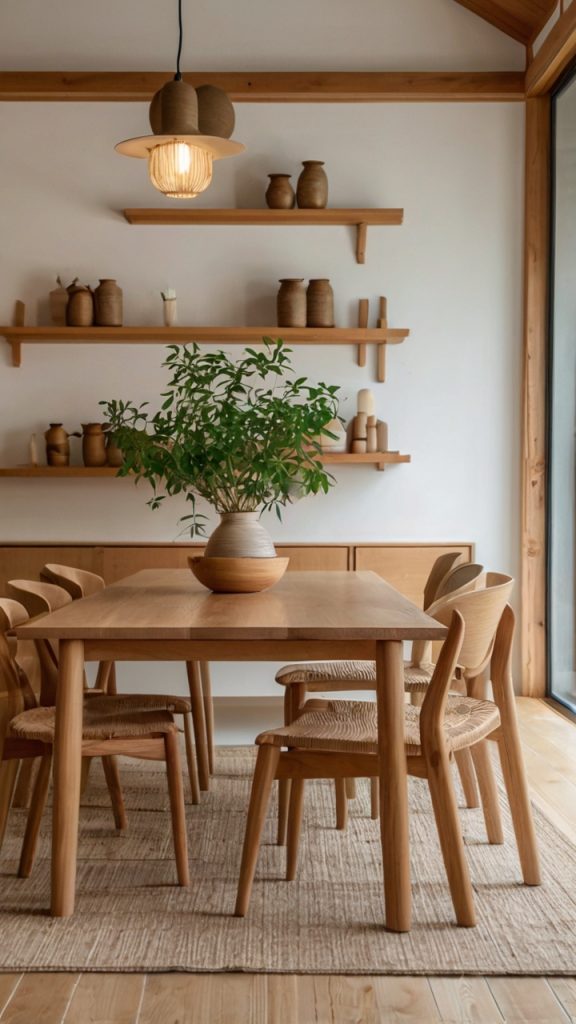
Last but definitely not least, Japandi style merges Japanese minimalism with Scandinavian coziness. This hybrid approach creates spaces that feel both zen and welcoming.
Japandi focuses on functional beauty and natural simplicity. Every piece should serve a purpose while contributing to the overall aesthetic harmony.
Essential Japandi Elements
Build your Japandi foundation with:
- Low-profile furniture in natural wood
- Neutral color palette (whites, beiges, soft grays)
- Natural materials (bamboo, rattan, linen)
- Minimal decorative objects
- Clean, uncluttered surfaces
Creating Zen Flow
Arrange furniture to promote easy movement and visual calm. Leave breathing room around pieces. Use shoji-style screens or open shelving as subtle room dividers. The space should feel meditative, not sparse.
Bringing It All Together
So there you have it – 15 ways to make your living and dining room combo actually work together instead of fighting for attention. Remember, the best design choice reflects your lifestyle and personality. You don’t have to commit to just one style either. Mix elements that speak to you and create something uniquely yours.
The real secret? Start with function, then add style. Figure out how you actually use these spaces daily. Do you host dinner parties weekly? Netflix and chill more your speed? Build around your real life, not some Instagram fantasy.
Take it from someone who’s rearranged furniture at 2 AM more times than I care to admit – getting your combo room right takes experimentation. Try different layouts, live with them for a bit, then adjust. Your perfect space won’t happen overnight, but when you nail it? Pure magic.
Ready to transform that combo space from awkward to awesome? Pick one or two ideas that resonate with you and start there. Small changes lead to big transformations. And hey, if all else fails, just add more plants. Plants make everything better, trust me on this one.
